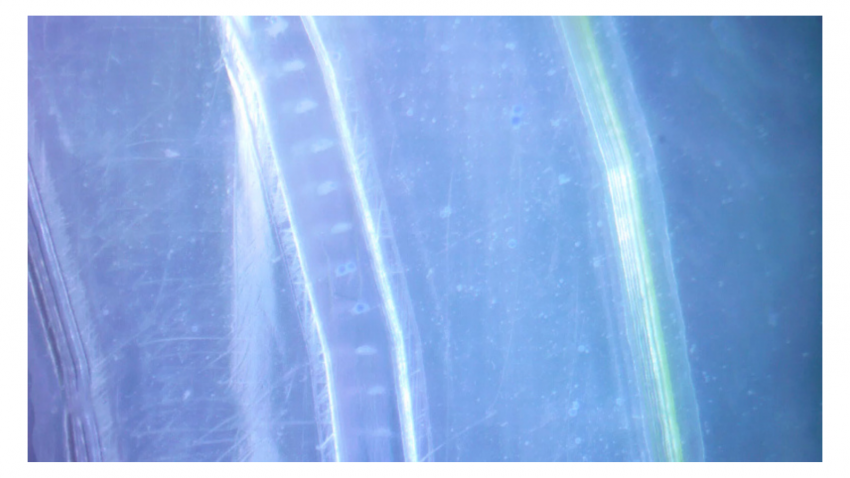You are here
‘Shadow Waveguide’ Casts Complex Acoustic Patterns to Control Particles
New approach to 'acoustic tweezers' using metamaterials could help push past limitations for cell and tissue engineering applications

Engineers at Duke University have devised a new approach to using sound waves to manipulate tiny particles suspended in liquid in complex ways. Dubbed a “shadow waveguide,” the technique uses only two sound sources to create a tightly confined, spatially complex acoustic field inside a chamber without requiring any interior structure. The technology offers a new suite of features to the fast-developing platform of acoustic tweezers that has applications in fields such as chemical reaction control, micro-robotics, drug delivery, and cell and tissue engineering.
The research appeared online August 18 in the journal Science Advances.
Acoustic tweezers are an emerging technology that uses sound waves to manipulate small particles suspended in liquid. Because no physical object is touching the particles, the technique is gentle, offers no biocompatibility issues and requires no labels, making it an enticing choice for working with delicate biomolecules.
However, despite all of its potential, the technology does have its limitations. Most current setups use multiple sound sources placed around a liquid-filled chamber that creates a checkerboard pattern of areas that can trap and move particles in lockstep with one another. This makes it difficult to manipulate particles independently of one another or through complex patterns. The latter can be achieved by including solid channel structures within the chamber, but this can damage delicate particles and limit how quickly samples can be moved through the system.
To overcome these limitations, Steve Cummer, the William H. Younger Distinguished Professor of Engineering at Duke, turned to ideas inspired by metamaterials. Metamaterials are synthetic materials composed of many individual engineered features, which together produce properties not found in nature.
Read more about the role of metamaterials in this new approach here >>
